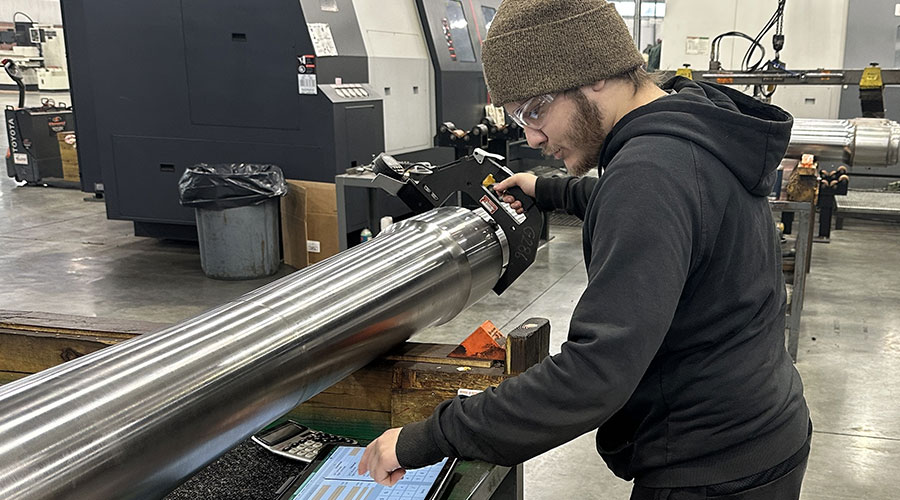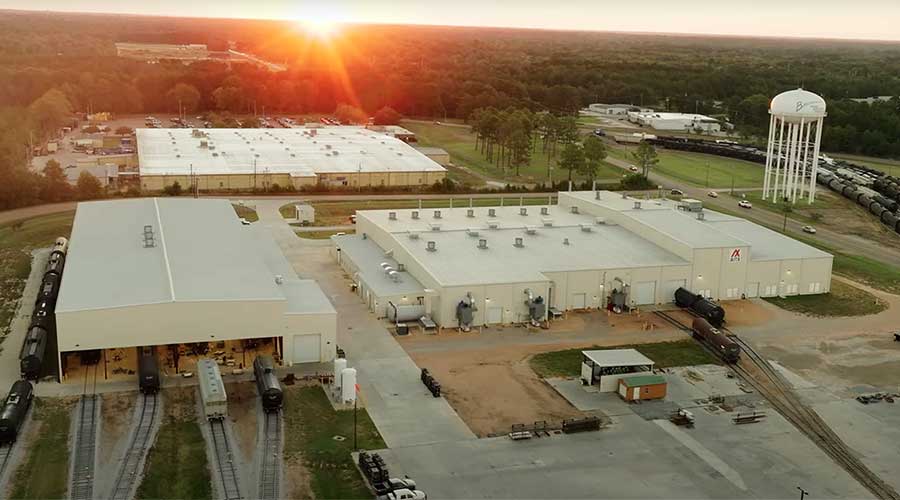Stay updated on news, articles and information for the rail industry
November 2024
Rail News: Mechanical
Guest comment: Debunking the myth of a North American box-car cliff by Bill Sheehan, TTX

Every few years, the idea of an impending box-car cliff resurfaces, suggesting the rail industry is facing a critical shortage of box cars as older cars retire. While these narratives grab attention, they don’t reflect reality. The North American box-car fleet is not only stable but also positioned for long-term growth.
There are and will be more than enough box cars in the fleet to meet current and future demand, thanks to sustained investment by railroads, rail-car leasing companies and others in a modern, efficient fleet.
The so-called “box-car cliff” and investment: The notion of a box-car cliff is not new. For instance, in 2015, a Wall Street Journal article raised alarms, citing a 41% reduction in box cars over the previous decade and predicting negative impacts on industries that rely heavily on box cars, such as paper and lumber, as aging cars were scrapped faster than replacements were built.
Those predictions never materialized. While box cars built in the 1970s are reaching the end of their useful lives, rail industry participants have continued to make significant investments in box cars, renewing the fleet with cars better adapted to today’s mix of box-car traffic through a market-driven process.
Ultimately, the proper size of the box-car fleet depends on the amount of demand for the transportation of goods in those cars, not the other way around. Yet, the myth of the box-car cliff persists because it is in the interest of some to profit from supplying box cars without regard to the underlying market demand for transportation in box cars.
The truth is, railroads, shippers and leasing companies have all contributed to the constant renewal and modernization of the box-car fleet, adding new, larger and more efficient cars to the fleet as older cars are being retired. This evolution is happening in response to market forces, which if allowed to operate will continue to ensure that supply meets demand, now and in the future.
Efficiency through larger box cars: One key trend driving modernization is the shift from 50-foot to 60-foot box cars. These newer models can carry up to 205,000 pounds of freight — significantly more than the 155,000 pounds in older models — and improve operational efficiency by enabling shippers to move up to 20% more goods per load.
Even with this transition, the fleet remains flexible, continuing to produce and maintain 50-foot box cars for those who need them. The adaptability of the fleet is critical to supporting diverse industries and ensuring seamless operations across the rail network.
Pooling — Enhancing collabortation and sustainability: Pooling resources through shared rail-car arrangements is another key factor in the fleet’s success. As vice president of fleet management at TTX, I’ve seen firsthand how pooling reduces empty miles, improves fleet utilization and enhances service for shippers. It also supports sustainability. TTX’s pooling operations alone helped prevent over 154,000 tons of CO2 emissions between 2017 and 2021.
Pooling arrangements like TTX’s box-car pool, as well as the North American Boxcar Pool (NABP) to which any box-car owner can contribute cars, allow box cars to be available where they’re needed most, supporting both short-line and Class I railroads in maintaining reliable service. Efficiency-enhancing arrangements like these allow each box car to work harder, enabling the rail industry’s fleet of box cars to adapt to fluctuations in demand and minimize inefficiencies and positioning the fleet for long-term resilience.
Looking ahead — A resilient box-car fleet: Contrary to claims of an impending box-car shortage, the rail industry is well-positioned to meet future demand. As a result of market-driven investments, the shift to larger box cars and the continued use of pooling, the North American box-car fleet is stronger, more efficient and more resilient than ever, enabling railroads to continue playing a critical role in the global supply chain.
Keywords
Browse articles on Bill Sheehan TTX box cars box-car fleetContact Progressive Railroading editorial staff.


 2025 MOW Spending Report: Passenger-rail programs
2025 MOW Spending Report: Passenger-rail programs
 Gardner steps down as Amtrak CEO
Gardner steps down as Amtrak CEO
 Guest comment: Oliver Wyman’s David Hunt
Guest comment: Oliver Wyman’s David Hunt
 Women of Influence in Rail eBook
Women of Influence in Rail eBook
 railPrime
railPrime







